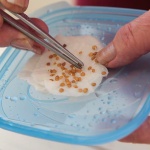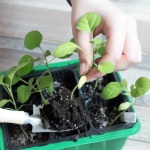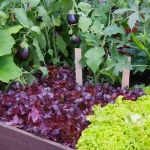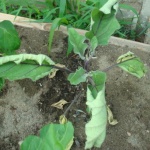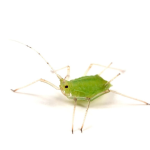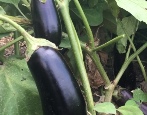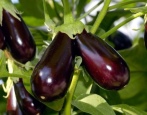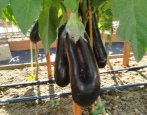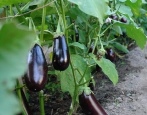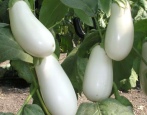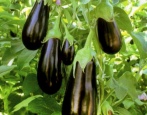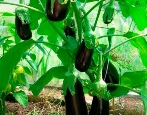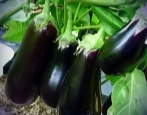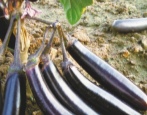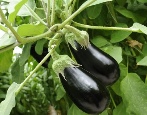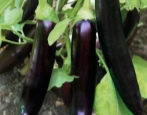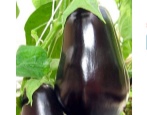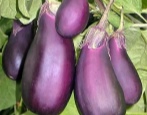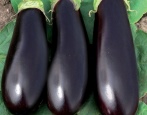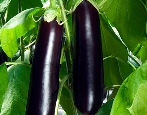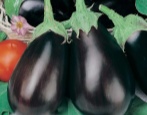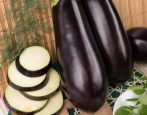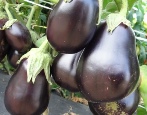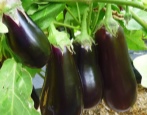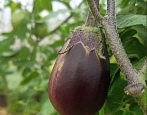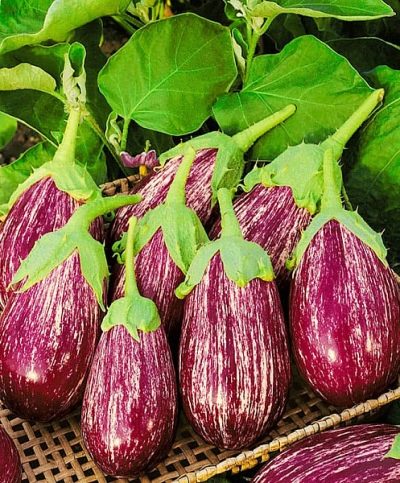
- Authors: Avdeev Yu.I., Kigashpaeva O.P., Ivanova L.M.
- Year of approval: 2000
- Bush height, cm: 75
- Fruit shape: oval
- Fruit weight, g: 143
- Yield: high yielding
- Fruit color: striped - purple and white stripes
- Ripening terms: early
- Pulp (consistency): elastic dense, no voids
- Color of the pulp: white
Eggplant Matrosik is a wonderful and fruitful vegetable that attracts gardeners with its resistance to various diseases and pests. It is worth considering in more detail the characteristics of the plant and the features of its cultivation.
Description of the variety
Sailor is a fairly compact semi-spreading type. Main characteristics:
bushes are small in size, the maximum height does not exceed 75 cm;
stems are powerful and sturdy;
leaves are medium in size, dark green in color.
The special color of the fruit contributed to the formation of its name - Matrosik.
Characteristics of the appearance of plants and fruits
The Matrosik variety is quite small in size, which makes it possible to plant a plant in small beds. Characteristics of eggplant fruits:
shape - oval or pear-shaped;
length - up to 17 cm;
weight - an average of 143 grams.
The eggplant skin is dense. The color is striped - lilac and white stripes. The vegetable perfectly tolerates transportation over long distances, for which it is appreciated by gardeners. The density of the pulp is average, there are no voids, the color is predominantly white.
Purpose and taste
Matrosik fruits are appreciated for the lack of bitterness in the taste. Basically, eggplants are used to create various blanks, as well as for the preparation of first and second courses.
Ripening terms
The bush forms the first fruits after 104 days from the moment of disembarkation. In the case of growing crops in a greenhouse, the ripening time is reduced.
Yield
The average yield of Matrosik eggplant reaches 5 kg per square meter of the garden. If desired, the indicator can be increased by following simple agrotechnical recommendations.
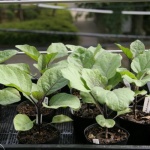
To get a tasty and bountiful eggplant crop, you must first grow strong and healthy seedlings. This culture is considered very capricious, therefore, you need to take care of seedlings when growing at home as correctly and carefully as possible.
Growing and care
Sailor is a variety that is quite resistant to temperature extremes, but gardeners recommend growing a crop with seedlings. Planting seeds in prepared peat pots is carried out closer to the beginning of spring. Main steps.
Selection. First, the eggplant seeds are taken, leaving large and intact samples. A glass of water can help in this, where the seed is soaked for a day. Empty seeds will float to the surface after this time.
Disinfection. It is carried out by soaking whole seeds in a solution of low concentration potassium permanganate.
Treatment. At the end, the eggplant seeds are additionally soaked in growth-stimulating compounds. You can buy these at gardening stores.
Only after that, the seeds are planted in pots, deepening them by no more than 1-2 cm. At the end of the container, watered and covered with transparent material, then put in a warm and sunny place.
Transplanting ready-made seedlings into open ground or a greenhouse is carried out by the end of May according to a certain scheme.
Up to 40 cm recede between the seedlings.
A distance of 70 cm is maintained between the rows.
The planting depth of seedlings is 6-7 cm.
When the disembarkation is complete, it remains to take care of the culture.
Watering.Eggplant is undemanding to watering, so water should be added to the soil as it dries. In drought, it is recommended to increase the volume of liquid, and in rainy times, reduce it so that the plant does not rot.
Top dressing. The variety must be fertilized at least 3-4 times per season using organic and mineral complexes. Basically, feeding is carried out during the period of active growth, flowering and fruiting of eggplant.
Weeding and loosening. Two mandatory procedures that are carried out after each watering. This approach will ensure the flow of necessary substances to the roots of the plant and prevent the transfer of diseases or pests by weeds.
Additionally, it is worth taking care of the shaping of the bush, which will increase the yield indicator. It is better to do this 2 weeks after planting the seedlings in the ground or greenhouse. In this case, compact bushes will put all their strength into the formation of fruits. When grown in a greenhouse, you should additionally take care of regular ventilation so that the bushes do not die.
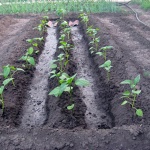
Planting eggplant is one of the most important stages in growing. When choosing a place for eggplants in your area, it is important to remember that this culture should be in warm soil, constantly illuminated by the sun. The plant is also very fond of spacious, open spaces, since its roots can grow over sufficient areas.


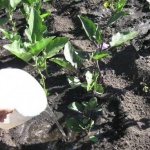
Soil requirements
Gardeners advise growing eggplants in fertile soils. Basic conditions:
the soil must have a neutral acidity index;
before planting seedlings, the soil should be thoroughly fertilized and loosened;
when choosing a place, preference should be given to sunny and calm areas.
Compliance with the listed recommendations will allow you to get a high yield.
Disease and pest resistance
The sailor has a fairly strong immunity. The variety has good resistance to common diseases and pests, but this does not mean that the bushes do not need to be processed. Gardeners recommend preventive treatment with special compounds that can be purchased at gardening stores.
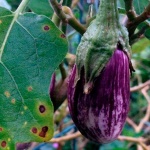
Eggplant is one of the most demanding crops. For its successful cultivation, it is necessary to create optimal conditions, as well as to carry out prevention and fight against diseases and pests. Eggplant often infects both fungal and viral diseases. If treatment is not started on time, you can completely lose the crop.
Review overview
About Matrosik eggplant gardeners leave mostly positive ratings. The pluses of the popular variety include:
high productivity;
unpretentious care;
excellent survival rate.
And also in the reviews they highlight the high density of the vegetable skins, which makes it possible to transport fruits over long distances.
